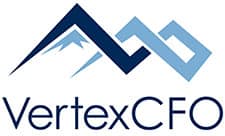We’ve distilled down our CFO and Controller expertise into insights that offer tangible steps companies can take to be financially responsible. We know that the only business constant is change, and these steps will help you stay agile.
-
Create your financial budget and forecasting model
Your annual budget should have buy-in from key senior leadership or operations. Be sure to track actual results against your goal, and regularly review and identify whether you are hitting or missing targets. You might consider running multiple scenarios to assess the potential impact of what you faced in 2020 and determine your new focus. Make your budget comprehensive – include a balance sheet, cash flow, profit and loss, key drivers for revenue, hiring, costs, cash flow, etc.
-
Preserve and manage cash
Know the central financial levers that impact your business, and base your decisions on the long term. Consider headcount: You can’t afford low contributors or employees who don’t fit the culture. Listen and take action accordingly. Regularly monitor your cash reserve models, realizing that timing depends on your current reserves. Ask yourself what constitutes the right amount of cash reserves: 30+, 60+, 90+, or perhaps 180+ days.
-
Taking distributions versus reinvesting in business
For many companies, the strategy on managing cash changed dramatically this past year. Reinvesting in your business allows you to retain and access cash, contain costs, and strengthen your balance sheet. It further provides the ability to move quickly, which is critical in the current business environment. You’ll be able to reinvest in opportunities to pivot the business, strengthening long-term success and growth opportunities.
-
Manage accounts receivable and accounts payable
Maintain a timely billing system and monitor your accounts receivable as well as your collections. Coordinate invoice timing, and consider automating and integrating CRM to Accounting. Conserve cash by keeping up with vendor terms. In addition, reconnect with your key vendors and re-negotiate any relevant terms, rebates, and discounts.
-
Maximize your banking relationships
A strong relationship with your banker is critical. If you haven’t been in touch, now is the time to reconnect. Pay close attention to terms and advance requirements on your lines of credit. It may help to re-negotiate terms or increase your line of credit availability on existing lines of credit. Stay up-to-date with SBA changes and funding opportunities, such as EIDL, PPP, and the Main Street Lending Program (look at conventional underwriting, guarantees, loan covenants, distribution restrictions, etc.) Furthermore, review your accounts and FDIC insurance risk; work with your banker to align your cash with your risk profile.
-
Review critical financial arrangements
Evaluate any contracts in place. If appropriate, review lease terms in exchange for lower square footage. Review any subscriptions. Take another look at sales and commission structures. Finally, work with your broker to evaluate your insurance coverage. If you aren’t getting the service you deserve, it’s your signal to change to a different broker.
-
Accurate and timely financial statements
Keep in mind that the typical timing for financial close is 5-8 business days. Pay attention to trending financial information and metrics. Get an accurate analysis and key explanations of any variances. In particular, focus on forecasts, cash needs, and profitability. Other areas of concern are capital needs, growth/hiring, and cost containment. The close process is continuous; therefore, it’s a good idea for bank recs and credit card recs to be reviewed and updated daily or weekly instead of at month-end. Integration of data is key (CRM’s, Accounting, Payroll, etc.) Finally, if you haven’t yet done so, eliminate paper by moving to the Cloud and electronic records where possible.
-
Review your sales and marketing strategy
Are your sales compensation and commissions aligned with your current strategy? Is your current strategy working or does it need to change based on the current business environment? Assess the motivation level of your sales team. Factor in travel budgets and Zoom conference calls. Analyze customer concentration – how your total revenue is distributed among your customer base can provide answers for what’s working well and what needs to be improved.
-
Culture and teamwork – keep your team engaged
Know what your employees need and want for their workspace and company culture. Consider mobile or phone hotspots, conference spaces, etc. Would employees prefer mandatory office days only for meeting days, teamwork, and so on? Flexibility of thinking may bring benefits to working remote more often – you gain happier employees, reduce the stress from traffic, etc. Remember that less corporate space means less rent as well as reduced common area maintenance charges and other miscellaneous fees. Another issue to review: your corporate travel policies.
The past year showed us how unpredictable our world can be. Take what we’ve provided you in these practical steps and use the information to enjoy a prosperous future for your business. Get started today by re-evaluating the lessons of 2020 and finding the opportunities 2021 affords.
Brian Medley is Founder and Principal, VertexCFO, a Denver-based outsourced CFO and Controller company offering expertise to middle market and well-funded start-up companies. VertexCFO specializes in making sense of complex financial information, providing CEOs and entrepreneurs sound data to run their businesses – including budgeting, forecasting, cash management, and accuracy of monthly financials. vertexcfo.com provides finance and accounting services in the capacity of outsourced CFO, outsourced controller, interim CFO, interim controller, part time CFO, part time controller, fractional CFO, fractional controller and temporary CFO services.

